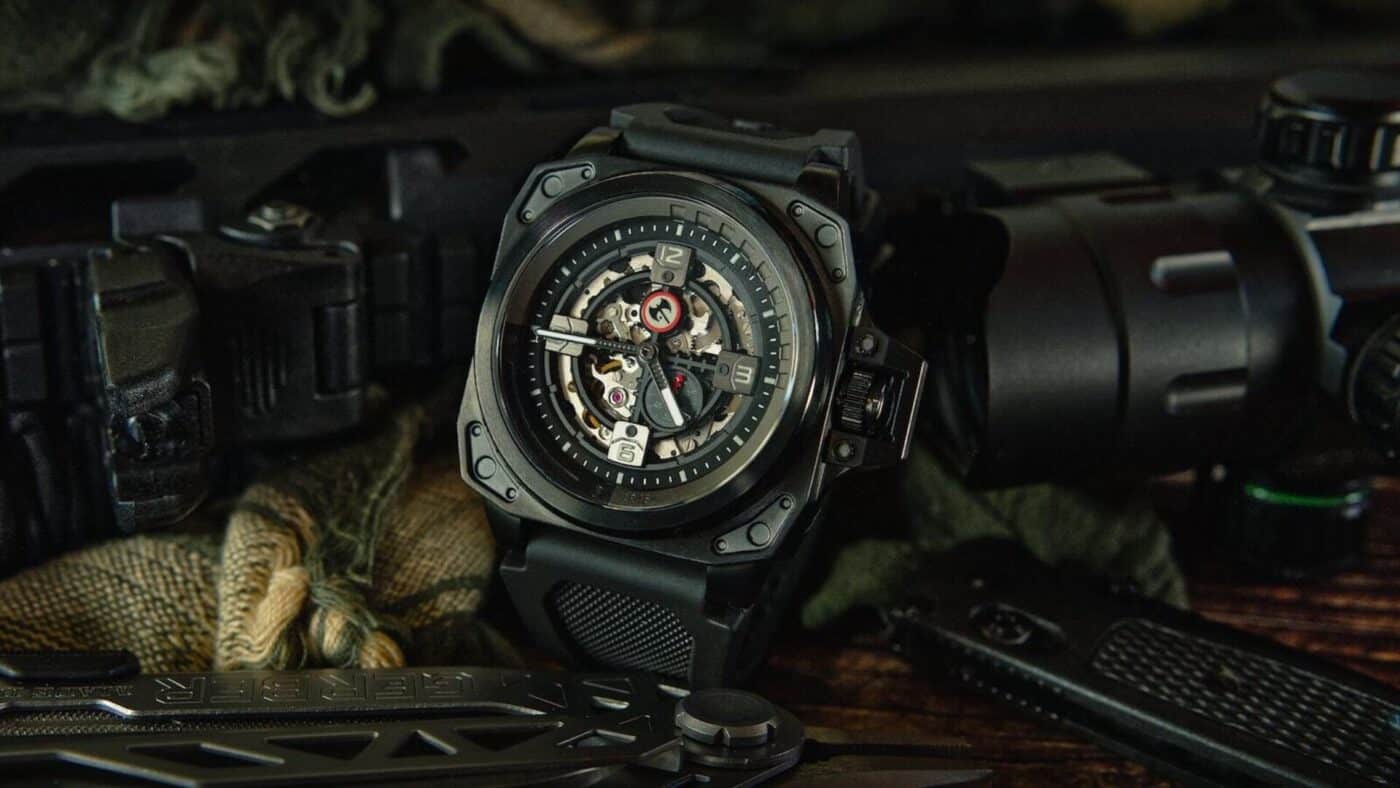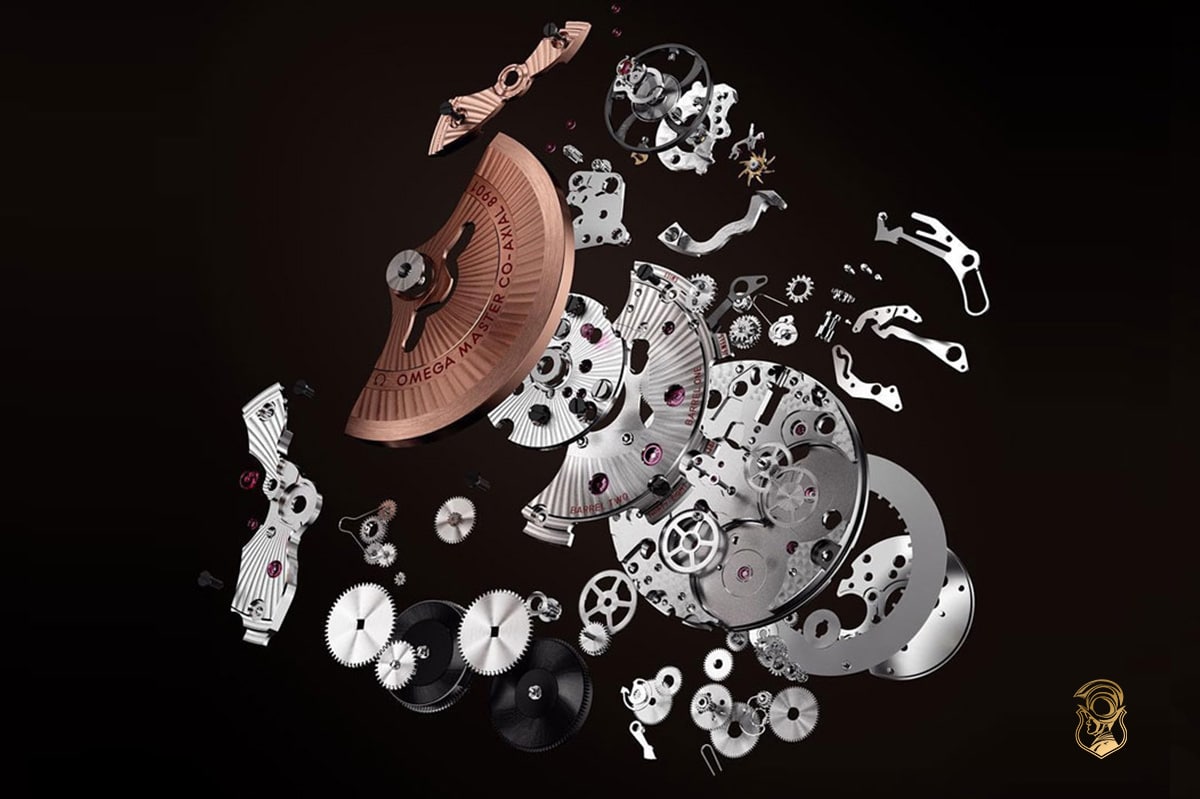Blog about Watches, Jewelry & Bags, Watch Blog
What is a Mechanical Watch? Everything You Need to Know About Mechanical Watches
Mechanical watches, including both manual and automatic types, are a must-have for watch enthusiasts. But what exactly is a mechanical watch, and how does an automatic watch differ from a manual one?
When discussing wristwatches, experts often analyze various types of movements, but the two most common types on the market today are quartz (battery-powered) and mechanical watches. “Mechanical watch” is a frequently encountered term—whether you’re a watch connoisseur or a beginner. But do you really understand what a mechanical watch is?
What is a mechanical watch? How many types of mechanical watches are there? How do they differ? To dive deeper into mechanical watches, let’s explore with Py-Luxury in today’s topic.

The History and Origin of Mechanical Watches
The first mechanical watch was invented in England by an Italian monk in 1275. Due to the strict prayer schedules and daily routines of Catholic monks, they required a reliable timekeeping device. Initially, it was a large clock with only an hour hand.
By 1370, these clocks had become popular in France and England. The Swiss watch industry emerged in 1541, when jewelers in Geneva, banned from making jewelry, learned watchmaking from refugees from France and Italy. By the 16th century, besides iron, brass and silver were the main materials used for making watches, leading to the development of spring-driven clocks.
In 1574, the pocket watch was invented using brass. In 1620, glass was introduced to watch faces, and it was soon incorporated into high-end watch models. The minute hand was added to clocks in 1680, and in 1675, the balance spring was invented, a crucial component for maintaining the timekeeping accuracy of mechanical watches.
By 1690, the second hand appeared. The 1700s saw wristwatches become popular in various designs and sizes. In 1716, George Graham, an Englishman, invented the escapement, leading to the highly accurate mechanical escapements.
In 1770, Abraham-Louis Perrelet invented a self-winding mechanism, paving the way for automatic mechanical watches. In 1795, Abraham-Louis Breguet, founder of the high-end watch brand Breguet, invented the tourbillon escapement.
In 1812, Breguet created the first wristwatch for Caroline Murat, Queen of Naples. In 1822, Nicolas Rieussec patented the “chronograph” or “stopwatch,” marking the advent of chronograph watches.
In 1915, Breitling introduced one of the first mechanical wristwatches with a chronograph feature, with a push-button separate from the crown. In 1926, the world saw the first watch with an automatic rotor, designed by British watchmaker John Harwood, based on Abraham-Louis Perrelet’s 18th-century concept for pocket watches.
In 1926, the first mechanical diving watch, the Oyster, was introduced, laying the foundation for the famous Rolex Oyster model and becoming the first waterproof mechanical watch in history. In 1931, the Swiss company LeCoultre & Cie and French company Jaeger collaborated to produce the Reverso collection with a sliding and flipping case to protect the watch face, leading to the formation of Jaeger-LeCoultre in 1937.
In 1969, the first automatic chronograph mechanical watches were introduced, with the Seiko Calibre 6139 and Zenith El Primero movements. Despite the Quartz Crisis starting in 1970, mechanical watches were not forgotten. Major brands focused on developing unique features, advanced materials, and patented mechanisms, writing new chapters in the history of watches.

What is a Mechanical Watch?
Mechanical watches are timepieces powered by a movement entirely constructed from components like the mainspring, gears, escapement, and balance wheel, assembled and operated together. Unlike quartz watches, which run on batteries, mechanical watches are complex machines with a long history.

For many users, including both seasoned watch wearers and those new to watches, mechanical watches are often recognized as automatic watches. In theory, mechanical watches include desk clocks, wall clocks, and wristwatches. An automatic watch is essentially a type of mechanical watch, but calling a mechanical watch an automatic one is not entirely accurate.
Types of Mechanical Watches
Mechanical watches are categorized based on their winding mechanism, resulting in three main types:
- Manual winding watches (mechanical hand-winding)
- Automatic winding watches (self-winding)
- Hybrid watches (both manual and automatic winding)
Additionally, there are non-standard types like hybrid mechanical watches (or pseudo-mechanical watches).
What is a Manual Winding Watch?
A manual winding watch requires the wearer to wind the crown to tighten the mainspring, which stores energy and powers the watch. These were the first mechanical watches, with automatic watches emerging nearly 500 years later.
With manual winding watches, the wearer must regularly wind the watch. Although this can be seen as an inconvenience, some people enjoy the ritual of winding the crown. Leading manufacturers have optimized the durability and aesthetics of manual movements, and today, manual winding watches from brands like Patek Philippe are often more expensive than their automatic counterparts.
The convenience of manual winding watches is that they do not need to be worn constantly, and their intricate, beautiful inner workings can be admired.

What is an Automatic Watch?
An automatic or self-winding watch doesn’t require manual winding. It features a rotor that oscillates with wrist movement, converting kinetic energy into stored energy. This mechanism eliminates the need for manual winding, making the watch both aesthetically pleasing and convenient. However, if not worn for an extended period, the watch will stop.

Automatic watches are popular among modern users for their value and convenience, making them the most prevalent type of mechanical watch on the global market.
What is a Hybrid Mechanical Watch?
Hybrid mechanical watches combine manual and automatic winding mechanisms. These modern watches can be wound manually and self-wind through the rotor, incorporating the advantages of both types and mitigating their drawbacks.
Manufacturers often market hybrid watches as automatic, so it’s advisable to consult with sales staff or reference materials for specifics when purchasing.
What is a Pseudo-Mechanical Watch?
Pseudo-mechanical watches blend mechanical and quartz components. However, watch aficionados typically regard them as quartz watches, as the primary power source is the quartz battery, with mechanical parts serving decorative purposes.
Structure and Operation of Mechanical Watches
Main Components of a Mechanical Movement:
- Mainspring: A coiled spring that stores energy.
- Crown Gear: Transmits energy from the crown to the mainspring.
- Ratchet Wheel: Engages the crown gear to wind the mainspring.
- Center Wheel: Receives energy from the mainspring and drives the hour and minute wheels.
- Minute Wheel: Linked to the center wheel, driving the minute hand.
- Hour Wheel: Linked to the minute wheel, driving the hour hand.
- Escape Wheel: Transfers energy to the balance wheel through the pallet fork.
- Pallet Fork: Regulates the motion of the escape wheel, transferring energy to the balance wheel.
- Jewel Bearings: Synthetic stones reducing friction and enhancing durability.
- Balance Spring: Controls the oscillation of the balance wheel.
- Balance Wheel: The heart of the watch, oscillating to regulate timekeeping.
How a Manual Winding Watch Works:
When winding the crown, energy is transmitted to the crown gear, which winds the mainspring. The mainspring then releases energy through a series of gears to the escape wheel, which transfers it to the pallet fork and balance wheel. The balance wheel oscillates, regulated by the balance spring, driving the hour and minute hands.
How an Automatic Watch Works:
An automatic movement, also known as self-winding, utilizes a rotor that oscillates with wrist movement. The rotor converts kinetic energy into stored energy, transmitted through gears to the balance wheel and balance spring. Many automatic watches feature a sapphire crystal back, showcasing the rotor’s movement and the intricate mechanics of high-end models.
Structure and operating principle of mechanical watches

Why Choose a Mechanical Watch?
Quartz watches offer greater accuracy, but the allure of mechanical watches lies in their craftsmanship and historical significance. Wearing a mechanical watch is a source of pride, showcasing a blend of artistry and engineering perfected over centuries. The expertise of skilled watchmakers and rigorous testing ensure a perfect timekeeping experience. Haute Horlogerie represents the pinnacle of mechanical watchmaking.
Wearing a high-end mechanical watch with complications instills confidence and pride, particularly for successful individuals who value social status and elegance. Although mechanical watches require significant investment, owning a complex mechanical movement from a luxury brand is a mark of distinction.
Read more watch blog here!
